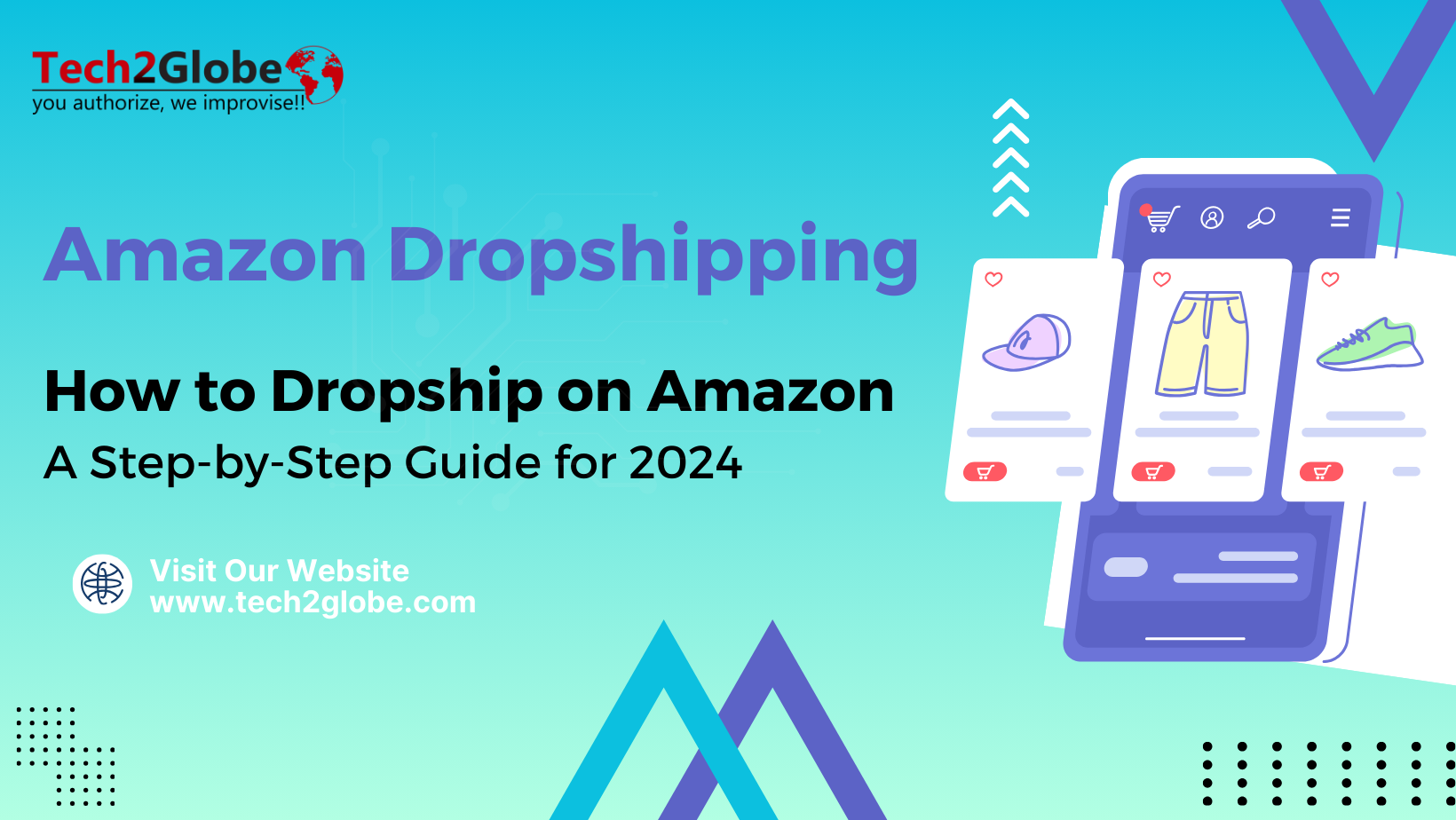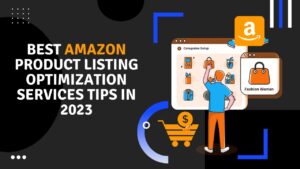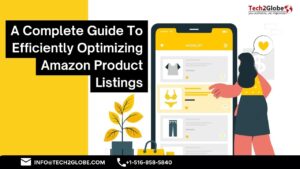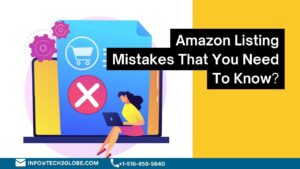Summary:
This article offers a thorough walk-through on launching a dropship business on Amazon. It addresses everything from opening a seller account and sourcing vendors to developing product listings and offering first-rate customer care.
Key Takeaways:
- Choose a profitable niche: Investigate the market carefully to find low-competition, high demand niches.
- Source trustworthy vendors: Work with reliable suppliers that provide premium goods, reasonable rates, and first-rate customer service.
- Refine your product listings. To raise search ranking and conversion rates, craft interesting product listings with concise descriptions, top-notch photos, and pertinent keywords.
- Give customer happiness first priority: Respond quickly to questions, effectively handle returns, and follow Amazon’s policies to deliver outstanding customer support.
Want to kick off a profitable online business? Learning to dropship on Amazon might be your path to business success. Amazon’s huge customer pool and strong setup make it a great place for drop shippers to reach many possible buyers without needing to store or manage stock.
This guide provides a complete look at how to start dropshipping on Amazon. We’ll show you each step, from setting up your account and finding suitable suppliers to making product listings that catch the eye and giving great customer service. If you’re new and wondering about dropshipping on Amazon, or if you’ve been selling for a while and want to grow, this article will give you the know-how and plans to do well in the challenging world of Amazon dropshipping.
What is Dropshipping on Amazon?
Dropshipping on Amazon means selling products without keeping stock. When someone buys something, you get it from another supplier who sends it straight to the customer. This way, you can start an Amazon dropshipping business without spending much money upfront or taking significant risks.
You need to set up an Amazon seller account to start dropshipping with Amazon. Go to sellercentral.amazon.com and sign up. You’ll have to provide details like your work email, credit card info, government ID, tax information, phone number, and bank account to receive payments from sales.
How does Dropshipping on Amazon Work?
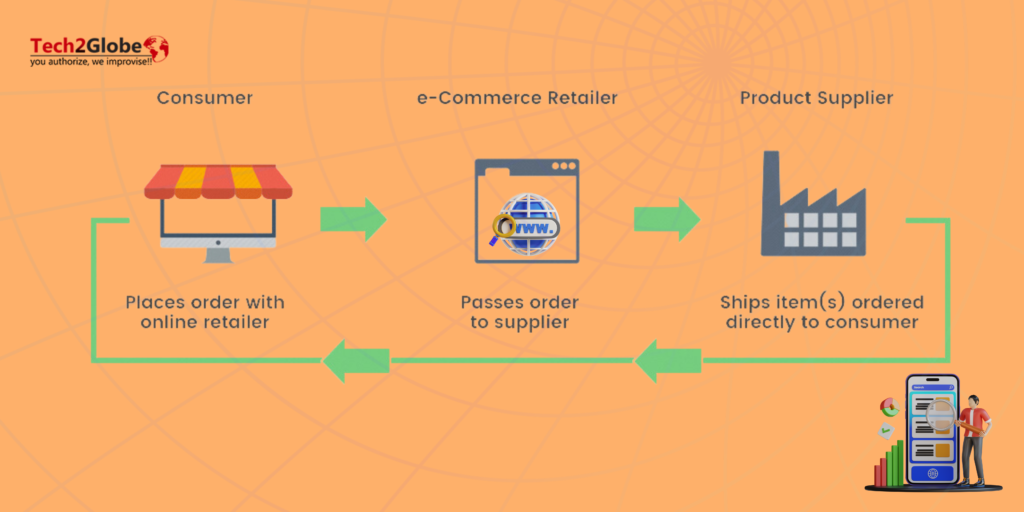
Let us explain how Amazon dropshipping works:
- Customer Buys: Someone reads your listing on Amazon and decides to purchase your product.
- You Receive the Order: The online sale is completed, and you receive payment from the consumer.
- You send an order to the supplier: Then, you buy the same product from your dropshipping provider. Most importantly, you give the supplier the customer’s shipping details.
- Ship to Customer: The supplier completes the order by sending the item directly to the customer.
Legal Considerations and Amazon’s Policies
Amazon permits dropshipping on its marketplace, but you must follow specific requirements to comply with their standards.
- You must be the only seller of record for your products.
- Your company’s name should appear as the seller on all packing slips, invoices, and product-related documentation.
- Remove any information that identifies third-party sellers before mailing orders to customers.
- Accept and process returns responsibly.
- Follow the rules of your seller agreement and Amazon’s drop shipment policy.
Follow these criteria to avoid the suspension of your Amazon selling rights.
Top 10 Popular Dropshipping and Wholesale Tools
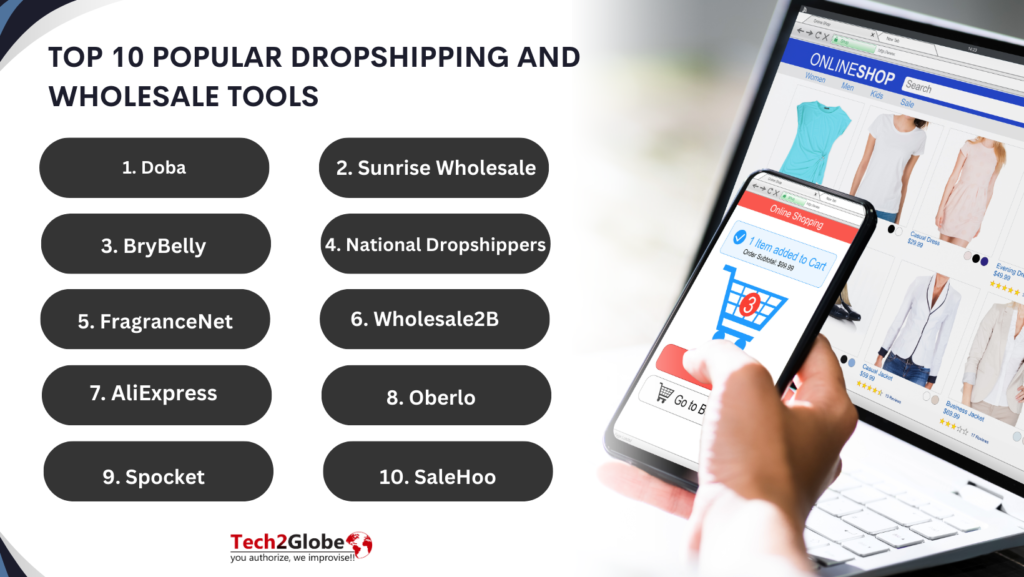
1. Doba
Features: Provides access to millions of products, supplier management, inventory tracking, and direct integration with major eCommerce platforms.
Pros:
- Easy product sourcing.
- Offers multiple integrations.
- Real-time inventory updates.
Cons:
- Higher membership fees.
- Limited product variety for some niches.
2. Sunrise Wholesale
Features: Offers product catalog, shipping, and inventory management. Integrates with eBay, Amazon, and other platforms.
Pros:
- Broad product range.
- Competitive pricing.
- Easy platform integration.
Cons:
- U.S.-based shipping only.
- Limited customer support.
3. BryBelly
Features: Specializes in toys, games, and fitness equipment, providing wholesale products for resellers.
Pros:
- Focus on high-demand categories.
- Bulk pricing discounts.
- U.S. warehouse for quick shipping.
Cons:
- Limited product categories.
- No dropshipping service.
4. National Dropshippers
Features: Offers access to thousands of products, order fulfillment, and discounted shipping.
Pros:
- No minimum order requirements.
- Low membership fees.
- Supports various eCommerce platforms.
Cons:
- Small product selection.
- U.S.-based suppliers only.
5. FragranceNet
Features: Specializes in fragrances and beauty products for dropshipping and wholesale orders.
Pros:
- Established reputation in the beauty industry.
- Competitive pricing.
- Global shipping.
Cons:
- Limited product niche.
- Less flexible for small businesses.
6. Wholesale2B
Features: Provides access to over 1 million products across multiple categories, inventory sync, and eCommerce platform integration.
Pros:
- Large product selection.
- Automatic order processing.
- No need to contact suppliers.
Cons:
- Higher subscription fees.
- Limited control over shipping times.
7. AliExpress
Features: Marketplace offering a wide variety of products for dropshipping with global shipping options.
Pros:
- Huge product variety.
- Free to use.
- No minimum order requirements.
Cons:
- Long shipping times.
- Quality control issues with some suppliers.
8. Oberlo
Features: Integrates with Shopify, allowing users to import products from AliExpress and automate the dropshipping process.
Pros:
- Easy-to-use interface.
- Streamlined order fulfillment.
- Inventory tracking.
Cons:
- Limited to Shopify users.
- Dependence on AliExpress suppliers.
9. Spocket
Features: Focuses on U.S. and EU-based suppliers, offering products for dropshipping with faster shipping times.
Pros:
- Faster shipping for U.S. and EU customers.
- High-quality product selection.
- Integration with Shopify and WooCommerce.
Cons:
- Limited product range.
- Premium products can be expensive.
10. SaleHoo
Features: A directory of vetted suppliers offering dropshipping and wholesale products, with education and tools for new sellers.
Pros:
- Vetted, reliable suppliers.
- Educational resources for beginners.
- Global supplier network.
Cons:
- Limited direct integration with platforms.
- Annual membership fee required.
These tools offer a range of features to help sellers find and manage products for dropshipping or wholesale, but each comes with its specific strengths and weaknesses depending on the business model and target audience.
Researching Potential Suppliers
The first step to kickstart your dropshipping journey on Amazon is to identify trustworthy suppliers. Exploring well-known platforms such as Alibaba, AliExpress, and Oberlo is a great way to begin. These marketplaces provide a vast selection of products and link you with manufacturers from around the globe. When evaluating potential suppliers, focusing on those with established reputations and positive customer feedback is essential.
Another useful approach is to leverage online supplier directories like Inventory Source. These resources can assist you in locating wholesale suppliers explicitly tailored for dropshipping. Additionally, consider searching for suppliers on social media platforms like Instagram, Facebook, and LinkedIn. Many businesses utilize these channels to display their products and engage with potential partners.
Remember to consider the effectiveness of a straightforward Google search. Seek out suppliers that cater to your specific niche and reach out to them directly. Keep in mind that selecting the right supplier is vital for the success of your Amazon dropshipping venture.
Evaluating Product Quality and Pricing
When you have listed some potential suppliers, you have to compare their products in terms of quality and price. The average order value on Amazon is typically in line with historical data, which once estimated the figure to be around $47.31. However, recent trends suggest that this number has likely increased, with the current range now estimated to be between $50 and $55.
The ideal price range for products on Amazon generally falls between $10 and $70. Most sellers on the platform achieve a profit margin of around 15–20%, with anything above 20% being considered outstanding. To maintain a healthy profit margin, a good rule of thumb is to price products at least four times higher than their wholesale cost.
Some of the top-performing categories on Amazon for 2024 include:
- Beauty and personal care
- Home and Kitchen
- Clothing, shoes, and jewelry
- Electronics
- Sports and outdoors
- Toys and games
Negotiating Terms with Dropshipping Partners
It’s time to negotiate conditions after deciding which providers are your top choices. Talk about crucial elements like return policies, shipping schedules, and minimum order amounts. To keep your seller rating high, be sure your selected suppliers can fulfill Amazon’s demanding delivery standards.
Negotiate pricing depending on your estimated sales volume. Larger orders sometimes qualify for discounts from suppliers, which can boost your profit margins. Talk about the potential for bespoke packaging or private labeling to set your items apart from rivals.
Don’t forget to inquire about the supplier’s return and defective product handling procedures. Keeping a good reputation on Amazon and handling customer support both depend on this information. You may lay the groundwork for a profitable Amazon dropshipping business by carefully negotiating conditions with your dropshipping partners.
Creating and Optimizing Amazon Listings
As an official Amazon SPN (Service Provider Network) partner, we offer comprehensive support to Amazon sellers. We are here to help businesses enhance their Amazon presence through expert services like account setup, listing optimization, PPC management, and more.
Consequently, we can assist you with the following steps:
Setting up your Seller Account
To start dropshipping on Amazon, you need to set up a seller account. Go to sellercentral.amazon.com and create a Professional or Individual account. The Professional plan costs $39.99 a month, regardless of sales volume, while the Individual plan costs $0.99 for each item sold. In order to receive payments, please include necessary information such as your business email address, credit card details, government ID, tax information, phone number, and bank account.
Crafting SEO-friendly Product Listings
Product listing is one of the most important aspects of Amazon dropshipping, as it determines the performance of a particular product. Begin with keyword research to determine the keywords that will help you to find customers for your products. Ensure that these keywords are used naturally within your product titles, bullet points, and descriptions to see better rankings in Amazon’s search engine.
When writing the title of your product, make sure to include features such as brand, type, color, and size, as well as if it has special features. It’s best to keep it brief but not boring; it should be about 200 characters long.
In the bullet points section, make sure to feature all the attributes of your product and the relevant benefits. Make sure there is an easy-to-read layout, and concentrate on features that make your item unique. This is your opportunity to persuade potential customers that they should buy your product.
In the product description, please write a description of the item, pointing out more about its attributes, functions, and utilities. Use proper paragraphing and formatting to ensure that it can be easily read. Just a couple of notes: please avoid being too formal or, on the contrary, using lots of capitals or other punctuation marks.
Pricing Strategies for Maximum Profit
Pricing your products effectively is essential for a successful Amazon dropshipping business. Start by researching your competitors’ prices to understand the market rate. Consider using Amazon’s Product Opportunity Explorer to analyze customer demand and pricing trends over time.
When setting your prices, factor in all costs, including Amazon’s fees, your supplier’s price, and shipping expenses. Aim for a healthy profit margin while remaining competitive. Remember that Amazon’s seller fees typically range from 8% to 15%, depending on the product category.
Consider using dynamic pricing tools to automatically adjust your prices based on market conditions and competitor pricing. This can help you stay competitive and maximize profits without constant manual adjustments.
Experiment with different pricing strategies, such as offering introductory discounts or bundle deals, to attract customers and boost sales. However, always ensure that your pricing allows for a sustainable profit margin to keep your dropshipping business viable in the long run.
Fulfillment and Customer Service Strategies
Understanding Fulfillment by Amazon (FBA) vs. Fulfillment by Merchant (FBM)
When dropshipping on Amazon, you have two main fulfillment options: Fulfillment by Amazon (FBA) and Fulfillment by Merchant (FBM). FBA allows you to send your products to Amazon’s warehouses, where they handle storage, packaging, and shipping to customers. This option can save you time and provide access to Amazon Prime shipping, which can boost your sales.
On the other hand, FBM requires you to manage inventory, process orders, and handle packaging and shipping directly to customers. While this gives you more control over the fulfillment process, it also means more responsibility for customer service and returns.
Order Management Tool
To effectively manage orders and shipments when dropshipping on Amazon, it’s crucial to have a streamlined system in place. Use Amazon’s Seller Central dashboard to track orders and update shipping information. If you’re using FBM, ensure a reliable process for forwarding orders to your suppliers and updating tracking information promptly.
Consider using dropshipping software or integrations to automate order processing and reduce the risk of errors. These tools can help you manage inventory levels, update product listings, and sync orders across multiple sales channels if you sell on other platforms besides Amazon.
Handling Customer Inquiries and Returns
Successfully managing customer service is essential for Amazon dropshipping businesses. Amazon responds to the majority of consumer questions and returns while using FBA. If you choose to use FBM, though, you’ll need to be ready to handle these things on your own.
Set up a procedure to respond to client inquiries fast and properly. Make sure your providers can manage returns effectively and establish clear return policies that adhere to Amazon’s rules. Keep in mind that even if you dropship, you still have responsibility for your customers’ happiness as an Amazon seller.
You can deliver a great client experience and establish a solid basis for your Amazon dropshipping business by concentrating on these fulfillment and customer service tactics.
Analyzing Performance Metrics
Monitoring your performance data closely is essential if you want to see growth in your Amazon dropshipping business. You can use the abundance of data that Amazon offers to make well-informed judgments. Start by routinely reviewing your sales records, which provide you with information on revenue patterns and your best-selling products. Keep an eye on your click-through and conversion rates to gauge how well your listings are performing.
Your customers’ comments and evaluations are a crucial additional measure to keep an eye on. These can offer insightful information about what aspects of your items customers find appealing and areas in need of development. Make better use of this information to improve your customer service and product offers.
Remember to analyze your profit margins. While dropshipping on Amazon can be profitable, with margins reaching as high as 40%, it’s essential to account for all costs, including Amazon’s fees, which typically range from 8% to 15% depending on the product category.
Is Amazon Dropshipping Legal?
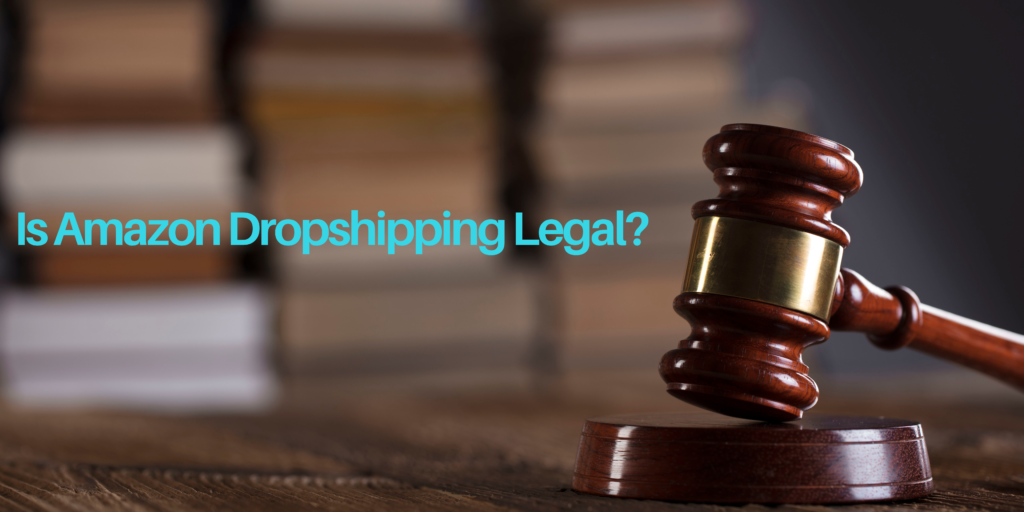
Yes, but only if you do it ethically; Amazon dropshipping is legal and approved on the marketplace. However, dropshipping on Amazon comes with numerous requirements. You can ensure that you are correctly adhering to these guidelines by seeking advice from an Amazon marketing consultant:
- All documentation related to the product, such as packing slips, invoices, and external packaging, must list you as the seller. Don’t mention your manufacturer or supplier.
- Make sure there are no indications of a third-party drop shipper, such as packing slips, invoices, or outside packaging, before shipping the box.
- Receiving and managing returns is your duty.
- As specified in the seller agreement, you are required to abide by all of Amazon’s terms of service.
- Purchasing anything from Amazon, Walmart, or any other third-party seller on Amazon and asking the vendor to ship the item straight to the customer is strictly prohibited.
Conclusion
Starting an Amazon dropshipping business can lead to success for entrepreneurs. This guide outlines the steps to start and expand your operation, including creating a seller account and growing your business. To succeed in the Amazon market, choose profitable niches, form strong supplier relationships, and improve product listings. Continuous learning and adaptability are crucial. Stay updated with Amazon’s rules, monitor market changes, and prioritize customer satisfaction. Your Amazon dropshipping business can thrive and generate good money by using the right plans and strategies.
At Tech2Globe, we recognize the challenges and opportunities that come with launching a dropshipping venture. Our dedicated team is here to support you every step of the way, from setting up your Amazon seller account to optimizing your product listings and managing your marketing strategies.
FAQs
- Is engaging in dropshipping still a viable option in 2024?
Dropshipping continues to be a workable business model in 2024. It attracts people who want to enter the eCommerce world or grow their businesses. This appeal stems from its low startup costs and more negligible risk than traditional retail models.
- What initial investment is required to start dropshipping on Amazon?
Starting a dropshipping business on Amazon doesn’t involve specific fees for dropshipping itself. However, you should know about Amazon’s standard selling fees. Also, if you choose to use services like Fulfillment by Amazon (FBA), consider possible costs for product storage and shipping.
- Can you still make money by dropshipping on Amazon?
Yes, Amazon dropshipping can still bring in cash. Jungle Scout’s State of the Amazon Seller Report shows that 94% of Amazon sellers using the dropshipping model say they’re making money. Your success hinges on how much it costs to get products, what prices you set, and how well you handle Amazon’s fees.
- Does Amazon allow dropshipping?
Amazon’s okay with dropshipping as long as you follow their rules. You must be the official seller, meaning you own the stuff before it ships to the customer. Also, you have to clarify that you’re the seller on all product paperwork and details.

Sarabjeet Singh is the Vice President of Operations at Tech2Globe and brings over 15 years of experience in various industries, including IoT, education, retail, government, FMCG, hospitality, and e-commerce. His leadership focuses on operational excellence and exceeding customer expectations, implementing contemporary solutions. Sarabjeet’s expertise spans e-commerce consulting, software development, data management, BPO/KPO support services, digital marketing, graphics, and startup consulting. He fosters a collaborative work environment, ensuring Tech2Globe delivers high-quality solutions.




